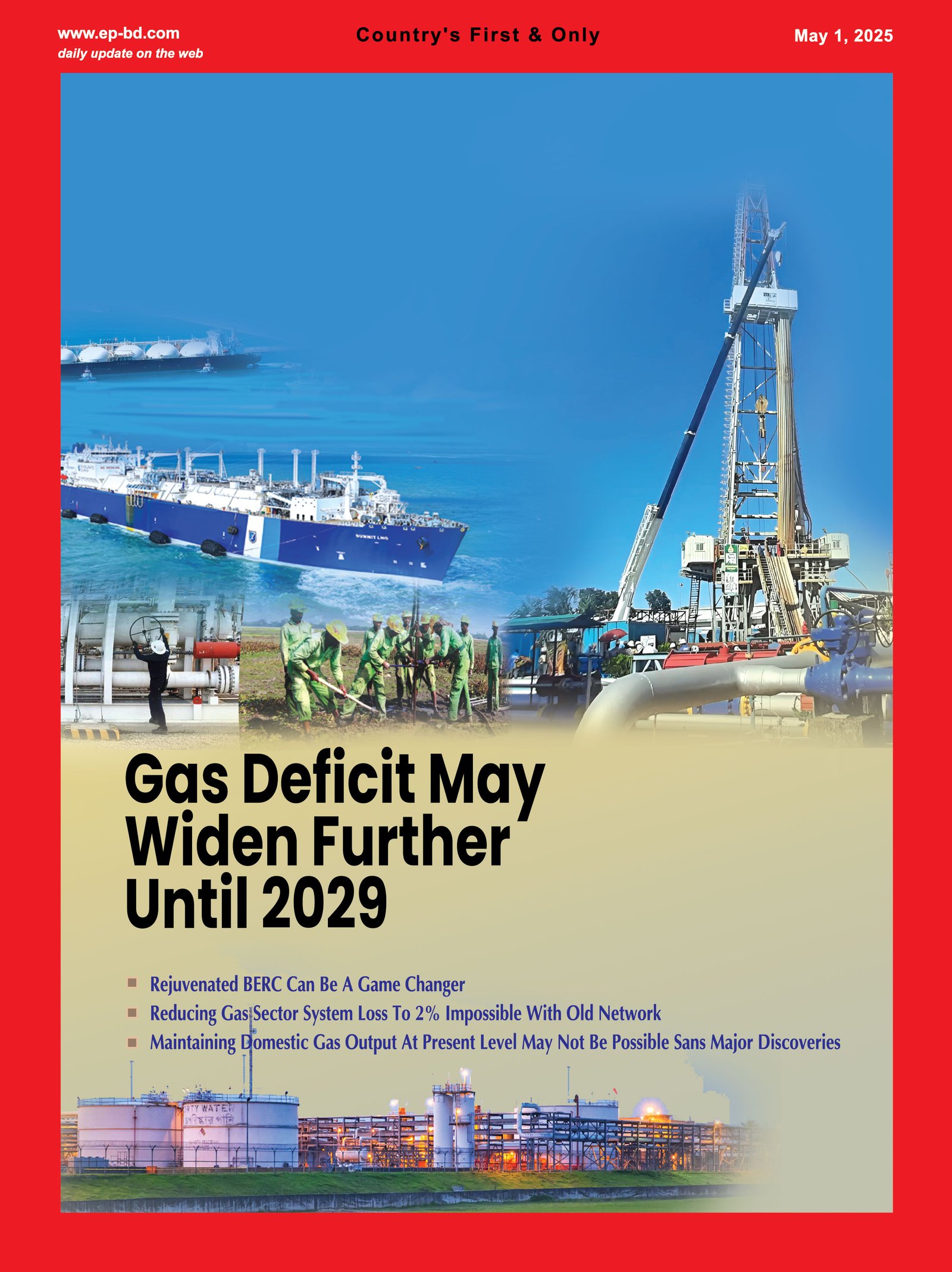
Download Link for Energy & Power Vol 22 Issue 22 (May 1, 2025) as PDF/userfiles/EP_22_22.pdf
Bangladesh is facing a deepening gas crisis, prompting the authorities concerned to take urgent action to stabilize the supply. The government is implementing a range of strategies, including boosting exploration, integrating untapped gas from Bhola, and revising production sharing contracts (PSCs) to attract foreign investment. Efforts to expand LNG import infrastructure are also underway, with new Floating Storage Regasification Units (FSRUs) and a proposed land-based LNG terminal. The goal is to increase gas supply capacity to 4,800 MMCFD by 2030, up from the current 1,900 MMCFD. However, the path to this goal is fraught with challenges. Domestic gas production continues to decline, heavily reliant on the Bibiyana field, which is expected to see a steep decline in output in the coming years. The government has set plans to drill 150 new wells by 2028, but progress has been slow due to bureaucratic and procurement delays. A major part of the solution lies in Bhola’s gas reserves, which come with challenges. While plans to develop the region’s resources include drilling 20 wells and constructing a new pipeline, doubts about reserve estimates and grid connectivity remain. Offshore exploration also suffers from limited data and political uncertainty. LNG import expansion has faced setbacks with canceled projects and regulatory hurdles.
With demand growing, experts warn that Bangladesh could face a significant gas shortage by 2030 unless policy reforms are fast-tracked. They urge reforms in contractor engagement, data transparency, and PSC frameworks to accelerate gas sector recovery and ensure energy security.
For E-Book: https://enp.tiny.us/May1Y25



